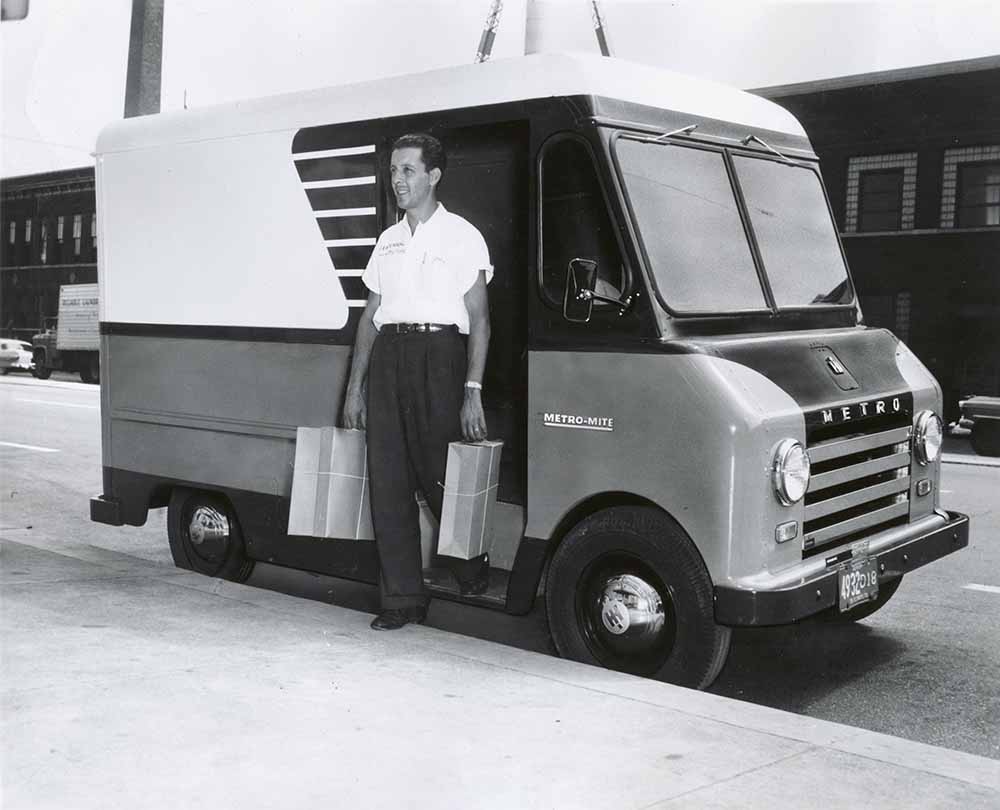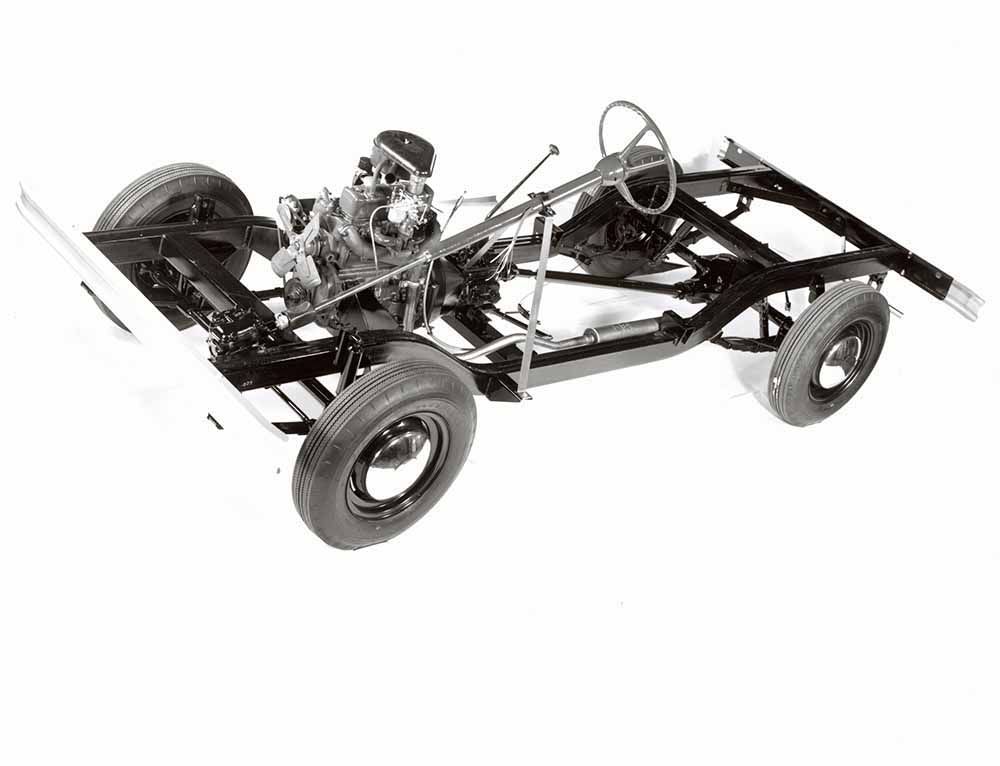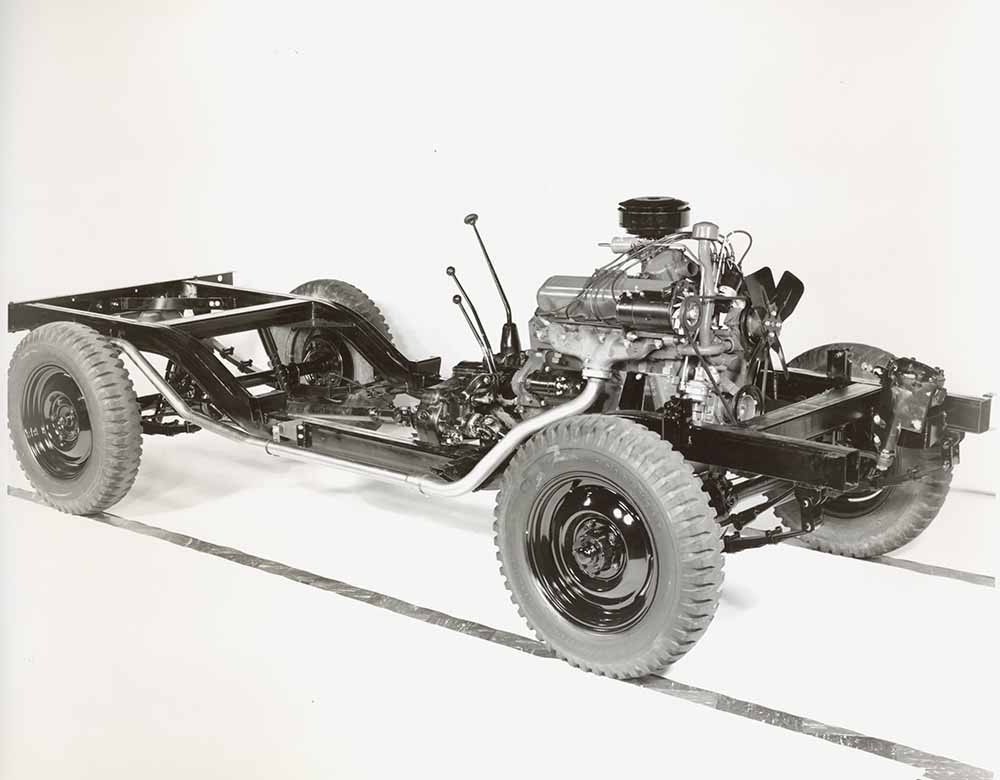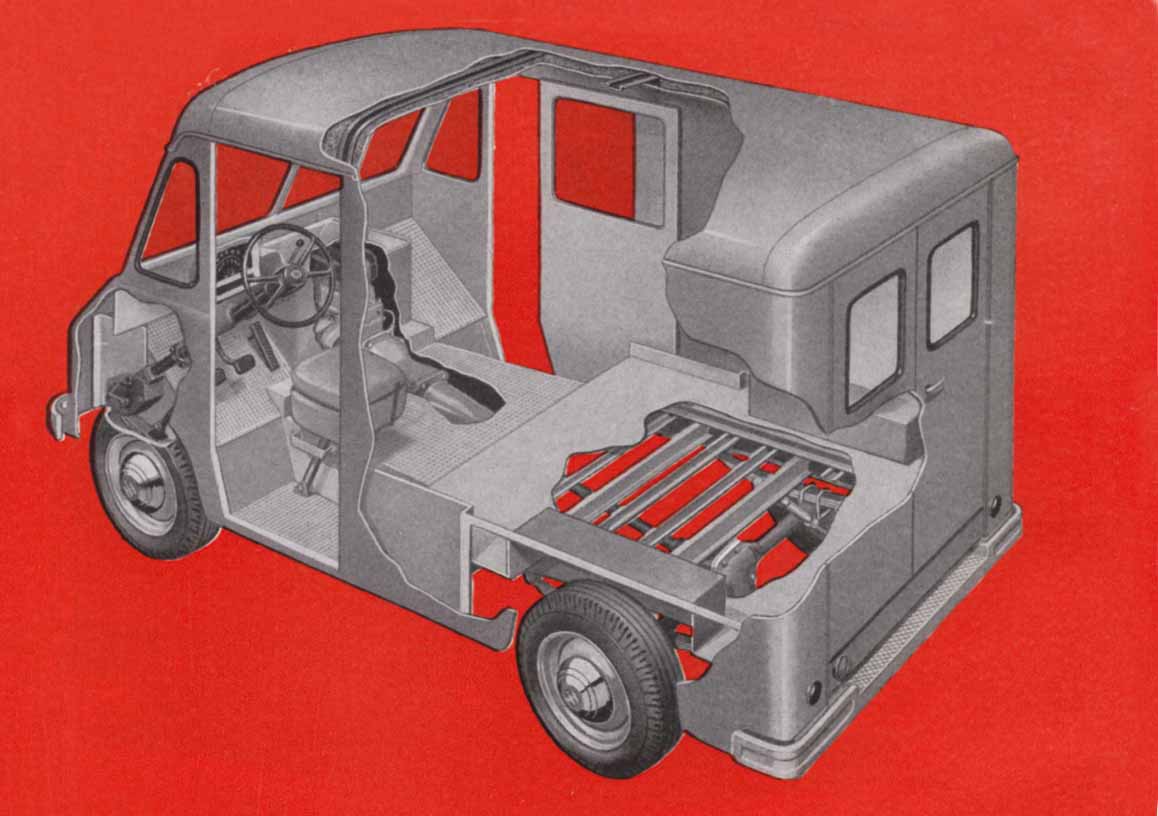The Scout 80 Metro-Mite AM-80 Connection

When International began seriously pursuing the idea for a compact 4x4 in 1958, their engineering department was finishing up another new and unique product, the AM-80 Metro-Mite panel van. International was already known for panel vans, the legendary Metro in particular and the more recent Metro-Lite. While the Metro-Mite took it's place as the smallest van in the lineup, the soon-to-be Scout would take it's place as the smallest truck.
1959 Metro Mite
The lightweight AM-80 was a timely and worthwhile addition to the International stable but a poor powerplant choice blunted it's market impact. The production version weighed 2,800 pounds and could carry a 200 cubic foot, 1,000 pound payload. The Metro-Mite remained in production to about 1970 under it's original name, but the trucks itself lasted a few more years with a new name.
WHS110673
Built by International's Metropolitan Body Company, the Metro-Mite prototype was completed early in 1958. It sat on a 96.5 inch wheelbase, featured a unitized body and originally weighed only 2,500 pounds. It was powered by a British-built 1.5L (91 ci) Austin B-Series engine already being used in the Nash Metropolitan. Designed to compete with an influx of import compact commercials, the Metro-Mite would inspire the later Fleetvan from Kaiser-Jeep and the Studebaker Zip Van. International execs were favorably impressed with the prototype, gave a thumbs up and the Metro-Mite went into production late in October of 1958.
The big issue with the AM-80 had been the engine. IH didn't build a suitable four-cylinder engine in-house. Sure, they had tractor engines, but they were too big, heavy and low-revving for automotive applications. They had solicited quotes for four-cylinder engines from Wisconsin, Hercules, Continental, Volvo and even Kaiser-Jeep. Most of those engines were superior to the Austin in every way but price, and more powerful to boot. Trouble is, IH had some of the most aggressive beancounters in the industry. Even after many tests where the Austin engine fell short, the beancounters won and the Austin four was adopted as the AM-80 powerplant This is where the story dovetails with that new compact 4x4 truck project. 
1960 Scout Prototype Chassis A55
A prototype 4x2 Scout chassis with the 91 cubic inch, A-55 engine and the record indicates three of the five pilot models had them initially. They were later swapped out for 152 engines.
WHS110532
When the chassis engineering team started on the Scout, many of them were fresh off the Metro-Mite job. When it came to an engine, it was deja vu all over again: Lotta great engines out there but still a management unwilling to write big checks for outside sourced units. As a result, the Austin engine, which IH had by then dubbed the A-55, became the defacto Scout powerplant and when the very first hand-built prototypes were completed late in '59, some were powered by A-55s. The test results were even more unsatisfactory than they had been with the AM-80.
1960 Scout Prototype Chassis 4-152
Contrast the A-55 powered prototype chassis to this 4x4 prototype chassis that mounts a 4-152 test engine. WHS110182
The AM-80 was received well by the commercial interests needing it, mainly urban light delivery outfits, bakeries and laundries, but by the end of 1959 it already had a reputation problem. Yep, you guessed it... that A-55 engine! The Austin B-Series wasn't a horrible powerplant. It went on to power some well-loved British sedans and sports cars into the 1980s. It just wasn't suited to commercial use. The Metro-Mite had a modest 1,000 pound payload but in stop and go traffic, the 51 horsepower, light-duty four worked itself to death in short order. Legend has it companies with large fleets of AM-80s kept several engines on hand and their mechanics became adept in changing them in as little as an hour, sometimes out on the delivery route. Yeah, the brown stuff was in the fan, the splatter even reaching the engineering department as they developed the Scout.
1960 AM-80 Cutaway
Today, virtually all cars are of unitized construction, most small vans, SUVs, crossovers and even some light trucks. For 1958, a unit body panel van was a big deal. This allowed for exceptionally light weight and IH was one of the first to offer a commercial unitized body vehicle.
Just as things began to get dire for both the AM-80 and the Scout project, an engineer at the IH Indianapolis Engine Plant had an idea. Why not slice the newly developed small V8 in half and make it a four-cylinder? Great as it was in potentially solving International's engine dilemma, the idea was not unique in the auto industry. About the time the IH small V8s (266, 304 and 345 cubic inches) debuted for 1959, word was out that Pontiac was well on the way to having a four-cylinder derived from their 389 cubic inch V8. This engine would become the "Trophy-4 introduced for 1961 in a new line of midsized cars called Tempest. Searches have not discovered the name of the engineer that proposed the slant four, but Scout lovers should erect a "tomb of the unknown engineer" monument in his honor.
IH contemplated slant-four versions of all three of the production small IH V8s, which would have yielded 133, 152 or 176 cubic inch displacements. After testing 133 and 152 cubic inch prototypes, they chose the 152. A couple of prototype engines were done in time to test in some of the five hand-made Scout prototypes and the superiority of the 93 horsepower slant-four made it a shoe-in. Best of all, beancounters couldn't object because it was manufactured in-house and could be used in other applications... including the AM-80. For 1960, the 152 was an option in the Metro-Mite and after the leftover stocks of A-55s were used up, the 152 became the standard engine in 1961.
Funny how an inadequate engine connected two of International Harvesters most unique and historically significant automotive products, inspiring the creation of a new engine that saved the reputation of one and helped turn the other into a legend.
1961 Scout 80 Plus
Though the Scout bore no visual resemblance to the Metro-Mite, they shared some technical DNA and a common commercial purpose.
WHS111054



